2014-2017 GODS & GODDESSES by the Perth Mint
Antique finish and a high-relief strike, two-ounce (62.2g) in weight, and featuring ancient mythology as a subject matter. This is a pretty good description of one of the hottest trends in commemorative coins over the last couple of years and here’s a guide to the series that kicked it all off. Launching in early 2014 with little fanfare, Zeus, the first in the Gods of Olympus trilogy, came out of nowhere and became a hit. It took a few days for word to spread, but it wasn’t long before the whole 1,500 mintage was gone and aftermarket prices started to rise quickly. The next two coins were released over the course of the year and were gone in hours at most, despite allocations to make sure as many people as possible got one.
Fast forward to 2015 and the success of gods meant a sequel series was inevitable. Admirably sticking with the trilogy format instead of getting greedy and releasing five or more coins, the Perth Mint didn’t stray far from the ultra-popular format, just changing gender and depicting three Goddesses of the ancient Greek pantheon. Packaging was lightly tweaked, and the mintage was increased from 1,500 to 2,000, but in all other respects it was business as usual, even the artist, Tom Vaughan staying on board. As popular as Gods was, Goddesses reaffirmed the Perth Mints commitment to the format.
It was less clear what was to come in 2016, especially after the first antique, high-relief coin of 2016 from the Perth Mint was a superb kangaroo design, but come March and the first of the third annual trilogy broke cover and it was, surprisingly, Odin from a Norse Gods series. Odin has been appearing on quite a few coins in the last couple of years from mints like Scottsdale, BH Mayer and Gainesville. Topping them all was a superb Legends of Asgard coin from the new Choice Mint, so it seemed a brave decision to go head to head with so many competing designs, but they did so and for 2017 they did the inevitable and started a Norse Goddesses trilogy. The change of artist to Ing Ing Jong has been seemless, always a concern with so fundamental as swapping the designer.
All of the coins in the four trilogies are rimless, and the very stylistic artwork takes full advantage of the fact. While the diameter is a little more than normal, most of the extra weight has again gone to coin thickness, a necessary compromise with high-relief strikes, but a shame regardless. The designs, initially splitting opinion, have become well regarded, we’re big admirers here. Quality is high, prices remain firm, and the three coins a year release schedule is just enough to maintain interest without swamping collectors budgets. Despite the rise in price from $180 to $200 AUD with the 2016 coins, they remain good value given the rarity, care, and presentation. A fine series, deservedly popular and highly recommended.
2014 GODS OF OLYMPUS
01 ZEUS
Zeus was the sky and thunder god in ancient Greek religion, who ruled as king of the gods of Mount Olympus. His name is cognate with the first element of his Roman equivalent Jupiter. Zeus is the child of Cronus and Rhea, the youngest of his siblings to be born, though sometimes reckoned the eldest as the others required disgorging from Cronus’s stomach. In most traditions, he is married to Hera, by whom he is usually said to have fathered Ares, Hebe, and Hephaestus. At the oracle of Dodona, his consort was said to be Dione, by whom the Iliad states that he fathered Aphrodite. Zeus was also infamous for his erotic escapades. These resulted in many godly and heroic offspring, including Athena, Apollo, Artemis, Hermes, Persephone, Dionysus, Perseus, Heracles, Helen of Troy, Minos, and the Muses.
He was respected as an allfather who was chief of the gods and assigned the others to their roles: “Even the gods who are not his natural children address him as Father, and all the gods rise in his presence.” He was equated with many foreign weather gods, permitting Pausanias to observe “That Zeus is king in heaven is a saying common to all men”. Zeus is frequently depicted by Greek artists in one of two poses: standing, striding forward with a thunderbolt leveled in his raised right hand, or seated in majesty.
DESIGN: depicts a bearded Zeus rising up into a stormy sky wielding his thunderbolt and sceptre with an eagle flying above his shoulder. The design includes the inscription ZEUS and The Perth Mint’s ‘P’ mintmark.
02 POSEIDON
Poseidon is one of the twelve Olympian deities of the pantheon in Greek mythology. His main domain is the ocean, and he is called the “God of the Sea”. Additionally, he is referred to as “Earth-Shaker” due to his role in causing earthquakes, and has been called the “tamer of horses”. He is usually depicted as an older male with curly hair and beard.
The name of the sea-god Nethuns in Etruscan was adopted in Latin for Neptune in Roman mythology; both were sea gods analogous to Poseidon. Linear B tablets show that Poseidon was venerated at Pylos and Thebes in pre-Olympian Bronze Age Greece as a chief deity, but he was integrated into the Olympian gods as the brother of Zeus and Hades. According to some folklore, he was saved by his mother Rhea, who concealed him among a flock of lambs and pretended to have given birth to a colt, which was devoured by Cronos.
There is a Homeric hymn to Poseidon, who was the protector of many Hellenic cities, although he lost the contest for Athens to Athena. According to the references from Plato in his dialogue Timaeus and Critias, the island of Atlantis was the chosen domain of Poseidon.
DESIGN: depicts a bearded Poseidon in a boat pulled by two sea-horses/hippocampus’ through thrashing water. In his right hand he carries a trident, in his left the reins of the steeds. The design includes the inscription POSEIDON and The Perth Mint’s ‘P’ mintmark.
03 HADES
In ancient Greek mythology, Hades was worshipped as the God of the Underworld and the ruler of the dead. In addition to the underworld, he ruled over any and all things beneath the Earth, and for this reason he was also known as the God of Wealth as he presided over all the precious metals that existed underground.
Historically, Hades was often depicted sitting on his ebony throne with Cerberus, the threeheaded watchdog by his side. He was also known to wear a helmet of invisibility given to him by the Cyclops to help in the battle against the Titans.
Hades’ other symbols include the key to the underworld, a cornucopia or a two-pronged pickaxe, and the cypress and narcissus plants which were considered sacred to him.
DESIGN: depicts Hades sitting on his throne made of bones and skulls wearing his invisibility helmet. He is accompanied by Cerberus, the three -headed watchdog. The design includes the inscription HADES and The Perth Mint’s ‘P’ mintmark.
2015 GODDESSES OF OLYMPUS
01 HERA
Hera is the wife and one of three sisters of Zeus in the Olympian pantheon of Greek mythology and religion. Her chief function was as the goddess of women and marriage. Her counterpart in the religion of ancient Rome was Juno. The cow, lion and the peacock were considered sacred to her. Hera’s mother is Rhea and her father Cronus.
Portrayed as majestic and solemn, often enthroned, and crowned with the polos (a high cylindrical crown worn by several of the Great Goddesses), Hera may bear a pomegranate in her hand, emblem of fertile blood and death and a substitute for the narcotic capsule of the opium poppy. Hera had the ability to bless and protect a woman’s marriage, bring her fertility, protect her children, and ensure she was financially secure.
Hera was known for her jealous and vengeful nature against Zeus’ lovers and offspring, but also against mortals who crossed her, such as Pelias. Despite her rage at his infidelities, Hera remained loyal and faithful to her husband, bearing three of his children, Hebe, Ares, and Hephaestos. Paris also earned Hera’s hatred by choosing Aphrodite as the most beautiful goddess.
DESIGN: depicts Hera wearing a polos crown, sitting on a throne in the Temple of Hera, holding her lotus staff in her left hand. A lion and a peacock rest beside Hera on either side of the throne. The design includes the inscription HERA, and The Perth Mint’s ‘P’ mintmark.
02 ATHENA
Athena is the goddess of wisdom, courage, inspiration, civilization, law and justice, mathematics, strength, war strategy, the arts, crafts, and skill in ancient Greek religion and mythology. Minerva is the Roman goddess identified with Athena. Athena is known for her calm temperament, as she moves slowly to anger. She is noted to have only fought for just reasons, and would not fight without a purpose. She was also a companion of many heroes including Odysseus, Jason, and Heracles and is the patron goddess of heroic endeavour.
She is the virgin patroness of Athens. The Athenians founded the Parthenon on the Acropolis of her namesake city, Athens (Athena Parthenos), in her honour. Veneration of Athena was so persistent that archaic myths about her were recast to adapt to cultural changes. In her role as a protector of the city (polis), many people throughout the Greek world worshipped Athena as Athena Polias. While the city of Athens and the goddess Athena essentially bear the same name (Athena the goddess, Athenai the city), it is not known which of the two words is derived from the other.
DESIGN: depicts Athena next to an olive tree, wearing an aegis and holding a large spear in her left hand, and her shield in her right hand. She is accompanied by a serpent and an owl, with the Parthenon and ancient Athens in the background. The design includes the inscription ATHENA, and The Perth Mint’s ‘P’ mintmark.
03 APHRODITE
Aphrodite is the Greek goddess of love, beauty, pleasure, and procreation. Her Roman equivalent is the goddess Venus and she is identified with the planet of the same name. As with many ancient Greek deities, there is more than one story about her origins. According to Hesiod’s Theogony, she was born when Cronus cut off Uranus’s genitals and threw them into the sea, and she arose from the sea foam (aphros). According to Homer’s Iliad, she is the daughter of Zeus and Dione. According to Plato (Symposium, 180e), these two origins were of entirely separate entities: Aphrodite Ourania and Aphrodite Pandemos.
Because of her beauty, other gods feared that their rivalry over her would interrupt the peace among them and lead to war, so Zeus married her to Hephaestus, who, because of his ugliness and deformity, was not seen as a threat. Aphrodite had many lovers—both gods, such as Ares, and men, such as Anchises. Aphrodite is also known as Cytherea (Lady of Cythera) and Cypris (Lady of Cyprus) after the two cult sites, Cythera and Cyprus, which claimed to be her place of birth. Myrtle, doves, sparrows, horses, and swans were said to be sacred to her. The ancient Greeks identified her with the Ancient Egyptian goddess Hathor.
DESIGN: depicts Aphrodite sitting on the beach at Aphrodite’s Rock surrounded by scallop shells, holding a mirror in her left hand, with a dove perched on her right hand. She is accompanied by a swan and three dolphins, with the ocean and clouds in the background. The design also includes the inscription APHRODITE, and The Perth Mint’s ‘P’ mintmark.
2016 NORSE GODS
01 ODIN
Odin is a prominently mentioned god throughout the recorded history of the Germanic peoples, from the Roman occupation of regions of Germania, through the tribal expansions of the Migration Period and the Viking Age. In Anglo-Saxon England Odin held a particular place as a euhemerized ancestral figure among royalty. Narratives regarding Odin are primarily found in Old Norse works recorded in Iceland, mainly around the 13th century, texts which make up the bulk of modern understanding of Norse mythology.
Odin is depicted as one-eyed and long-bearded, frequently wielding a spear, Gungnir, and wearing a black or blue cloak and a broad hat. He is often accompanied by his animal companions— the wolves Geri and Freki and the ravens Huginn and Muninn, who bring him information from all over Midgard—and Odin rides the flying, eight-legged steed Sleipnir across the sky and into the underworld. Odin is attested as having many sons, most famously the god Baldr with Frigg, and is known by hundreds of names. In these texts, Odin frequently seeks knowledge in some manner and in disguise (most famously by obtaining the Mead of Poetry), at times makes wagers with his wife Frigg over the outcome of exploits, and takes part in both the creation of the world by way of the slaying of the primordial being Ymir and the gift of life to the first two humans, Ask and Embla.
DESIGN: depicts Odin wielding his spear and riding his horse Sleipnir. He is accompanied by his wolves and his ravens. The design also includes the inscription ODIN, and The Perth Mint’s traditional ‘P’ mintmark.
02 THOR
The hammer-wielding god Thor is associated with thunder, lightning, storms, oak trees, strength, the protection of mankind, and also hallowing, healing and fertility. Thor is frequently referred to in place names and gave his name to the day of the week Thursday (Thors Day). In Norse mythology, Thor bears at least 14 names, is the husband of the goddess Sif, the lover of the jötunn Járnsaxa, and is generally described as fierce-eyed, red-haired and red-bearded. With Sif, Thor fathered the goddess Þrúðr; with Járnsaxa, he fathered Magni; with a mother whose name is not recorded, he fathered Móði, and he is the stepfather of the god Ullr. The same sources list Thor as the son of the god Odin and the personified earth, Fjörgyn, and by way of Odin, Thor has numerous brothers.
Thor has two servants, Þjálfi and Röskva, rides in a cart or chariot pulled by two goats, Tanngrisnir and Tanngnjóstr (that he eats and resurrects), and is ascribed three dwellings (Bilskirnir, Þrúðheimr, and Þrúðvangr). Thor wields the mountain-crushing hammer, Mjölnir, wears the belt Megingjörð and the iron gloves Járngreipr, and owns the staff Gríðarvölr. Thor’s exploits, including his relentless slaughter of his foes and fierce battles with the monstrous serpent Jörmungandr—and their foretold mutual deaths during the events of Ragnarök—are recorded throughout sources for Norse mythology.
DESIGN: The reverse of the coin depicts Thor wielding his hammer, wearing his belt and gripping the fang of the serpent Jormungand. Also included in the design is a goat’s head, lightning and the inscription THOR. The Perth Mint’s traditional ‘P’ mintmark also appears in the design.
03 LOKI
In Norse mythology, Loki is a god or jötunn (giant), the son of Fárbauti and Laufey, and the brother of Helblindi and Býleistr. By the jötunn Angrboða, Loki is the father of Hel, the wolf Fenrir, and the world serpent Jörmungandr. By his wife Sigyn, Loki is the father of Narfi and/or Nari. By the stallion Svaðilfari, Loki is the mother—giving birth in the form of a mare—to the eight-legged horse Sleipnir. In addition, Loki is referred to as the father of Váli in the Prose Edda.
Loki’s relation with the gods varies by source; Loki sometimes assists the gods and sometimes behaves in a malicious manner towards them. Loki is a shape shifter and in separate incidents he appears in the form of a salmon, a mare, a seal, a fly, and possibly an elderly woman named Þökk. Loki engineers the death of the god Baldr and is eventually bound by the gods with the entrails of one of his sons. In both the Poetic Edda and the Prose Edda, the goddess Skaði is responsible for placing a serpent above him while he is bound. The serpent drips venom from above him that Sigyn collects into a bowl; however, she must empty the bowl when it is full, and the venom that drips in the meantime causes Loki to writhe in pain, thereby causing earthquakes. With the onset of Ragnarök, Loki is foretold to slip free from his bonds and to fight against the gods among the forces of the jötnar, at which time he will encounter the god Heimdallr and the two will slay each other.
DESIGN:
2017 NORSE GODDESSES
01 FREYA
Freyja is a goddess associated with love, sex, beauty, fertility, gold, seiðr, war, and death. Freyja is the owner of the necklace Brísingamen, rides a chariot pulled by two cats, keeps the boar Hildisvíni by her side, possesses a cloak of falcon feathers (Valshamr), and, by her husband Óðr, is the mother of two daughters, Hnoss and Gersemi. Along with her brother Freyr (Old Norse the “Lord”), her father Njörðr, and her mother (Njörðr’s sister, unnamed in sources), she is a member of the Vanir.
Freyja rules over her heavenly afterlife field Fólkvangr and there receives half of those that die in battle, whereas the other half go to the god Odin’s hall, Valhalla. Within Fólkvangr is her hall, Sessrúmnir. Freyja assists other deities by allowing them to use her feathered cloak, is invoked in matters of fertility and love, and is frequently sought after by powerful jötnar who wish to make her their wife. Freyja’s husband, the god Óðr, is frequently absent. She cries tears of red gold for him, and searches for him under assumed names.
DESIGN: depicts Freya with her sword in her left hand and wearing her magical feathered cloak. Also featured in the design is a cat perched on her right shoulder, her golden bristled boar ‘Hildisvini’, a shield, and a battlefield in the background.
02 FRIGG
Giving her name to the English weekday name Friday (“Frīge’s day”), Frigg is described in nearly all sources as the wife of the god Odin.
Frigg is described as a goddess associated with foreknowledge and wisdom in Norse mythology, the northernmost branch of Germanic mythology and most extensively attested. Frigg is the wife of the major god Odin and dwells in the wetland halls of Fensalir, is famous for her foreknowledge, is associated with the goddesses Fulla, Lofn, Hlín, and Gná, and is ambiguously associated with the Earth, otherwise personified as an apparently separate entity Jörð (Old Norse “Earth”). The children of Frigg and Odin include the gleaming god Baldr.
DESIGN: The reverse of the coin depicts Frigg sitting on Odin’s high seat cradling a newborn baby in one arm and holding a rose quartz pendant in the other. Also featured is a falcon, white candles and woven threads. The inscription FRIGG and The Perth Mint’s traditional ‘P’ mintmark also feature in the design.
03 HEL
In Norse mythology, Hel is a being who presides over a realm of the same name, where she receives a portion of the dead. Hel is attested in the Poetic Edda, compiled in the 13th century from earlier traditional sources, and the Prose Edda, written in the 13th century by Snorri Sturluson.
In the Poetic Edda, Prose Edda, and Heimskringla, Hel is referred to as a daughter of Loki, and to “go to Hel” is to die. In the Prose Edda book Gylfaginning, Hel is described as having been appointed by the god Odin as ruler of a realm of the same name, located in Niflheim. In the same source, her appearance is described as half blue and half flesh-coloured and further as having a gloomy, downcast appearance. The Prose Edda details that Hel rules over vast mansions with many servants in her underworld realm and plays a key role in the attempted resurrection of the god Baldr.
THE OBVERSE AND PACKAGING OPTIONS
The obverse design is common to the coins in all three series, and all are issued for Tuvalu, a staple of the Perth Mint for their non-Australia issues. As with all Tuvalu coins it’s the usual effigy of Queen Elizabeth II in attendance, again the popular one by Ian Rank Broadley. Her name, the denomination, the composition, and the issuing country are all inscribed around the rim. The antiquing process is very variable, giving the coins an individual, hand-finished nature which can be clearly seen in the two obverse pictures above.
Presentation has always been a high point for these coins. Custom wooden boxes, round with a quality padded interior, were used on the first two Olympus series. Screen printed on the lid and even on some of the internal padding, a lot of care and attention went into the box. The outer shipper boxes are equally of a fine quality, making the whole thing seem great value. Norse Gods changed the style of the boxes, but not the quality, being equally excellent and in our view, even better. All have a place for the serialised Certificate of Authenticity and in all cases the coins are not encapsulated, the Perth Mint deeming it unnecessary in light of the antique finish which should prevent tarnishing.
SPECIFICATION
| SERIES | DENOMINATION | COMPOSITION | WEIGHT | DIAMETER | FINISH | MINTAGE | DESIGNER |
|---|---|---|---|---|---|---|---|
| GREEK | $2 TUVALU | 0.999 SILVER | 62.27 g | 40.50 mm | ANTIQUE | 1,500 | TOM VAUGHAN |
| GODDESSES | $2 TUVALU | 0.999 SILVER | 62.27 g | 40.50 mm | ANTIQUE | 2,000 | TOM VAUGHAN |
| NORSE | $2 TUVALU | 0.999 SILVER | 62.27 g | 40.50 mm | ANTIQUE | 2,000 | ING ING JONG |
| GODDESSES | $2 TUVALU | 0.9999 SILVER | 62.213 g | 40.60 mm | ANTIQUE | 2,000 | ING ING JONG |


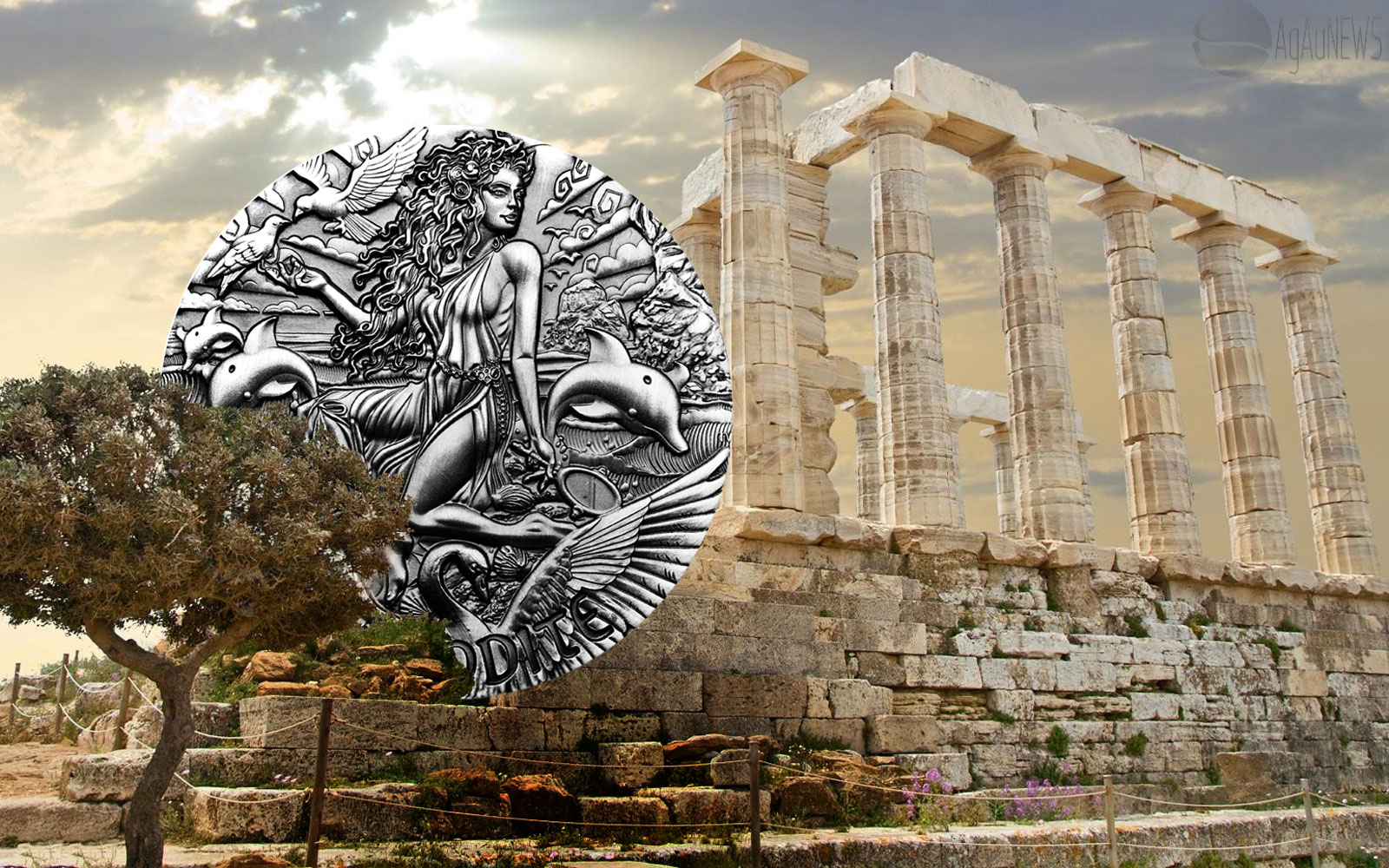

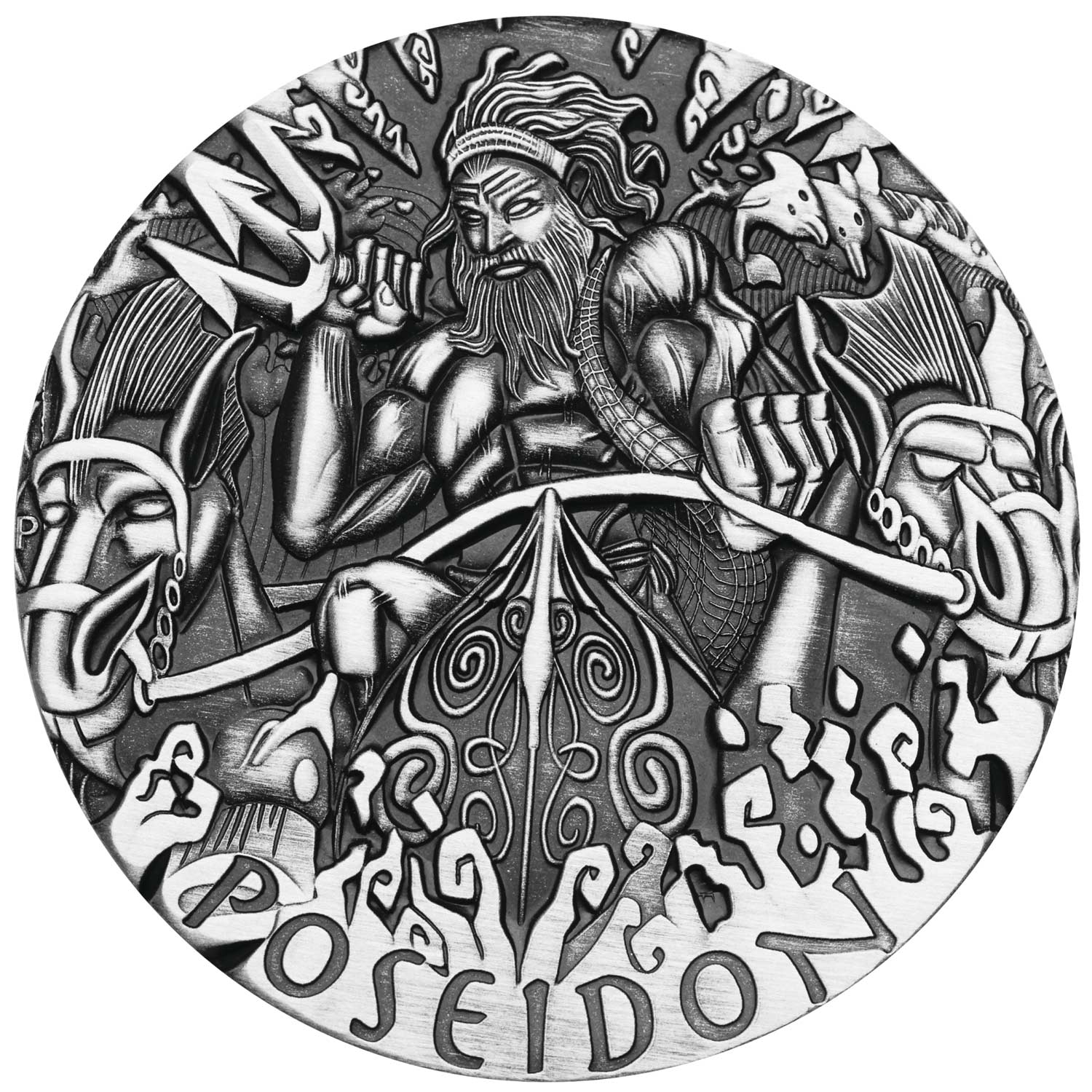
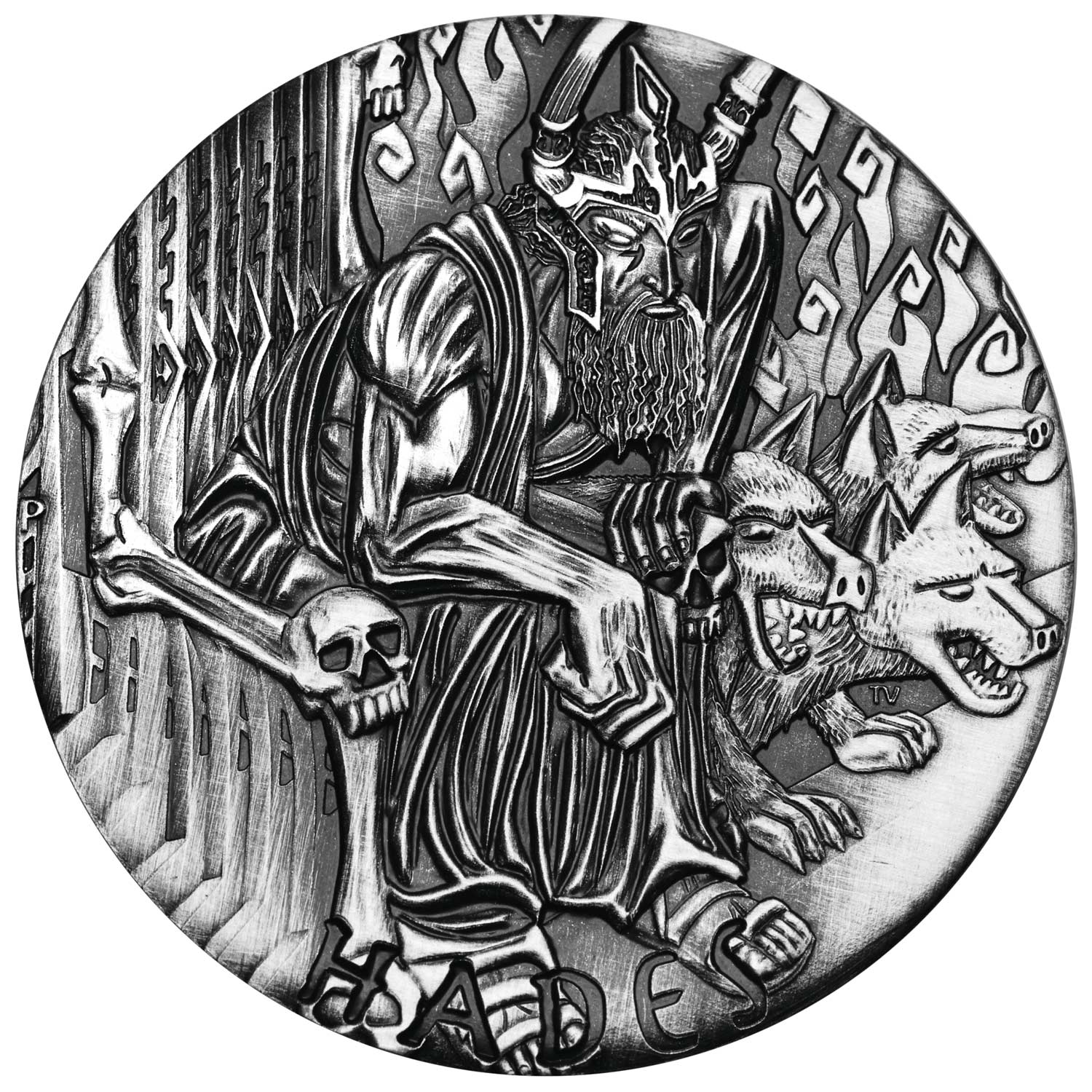
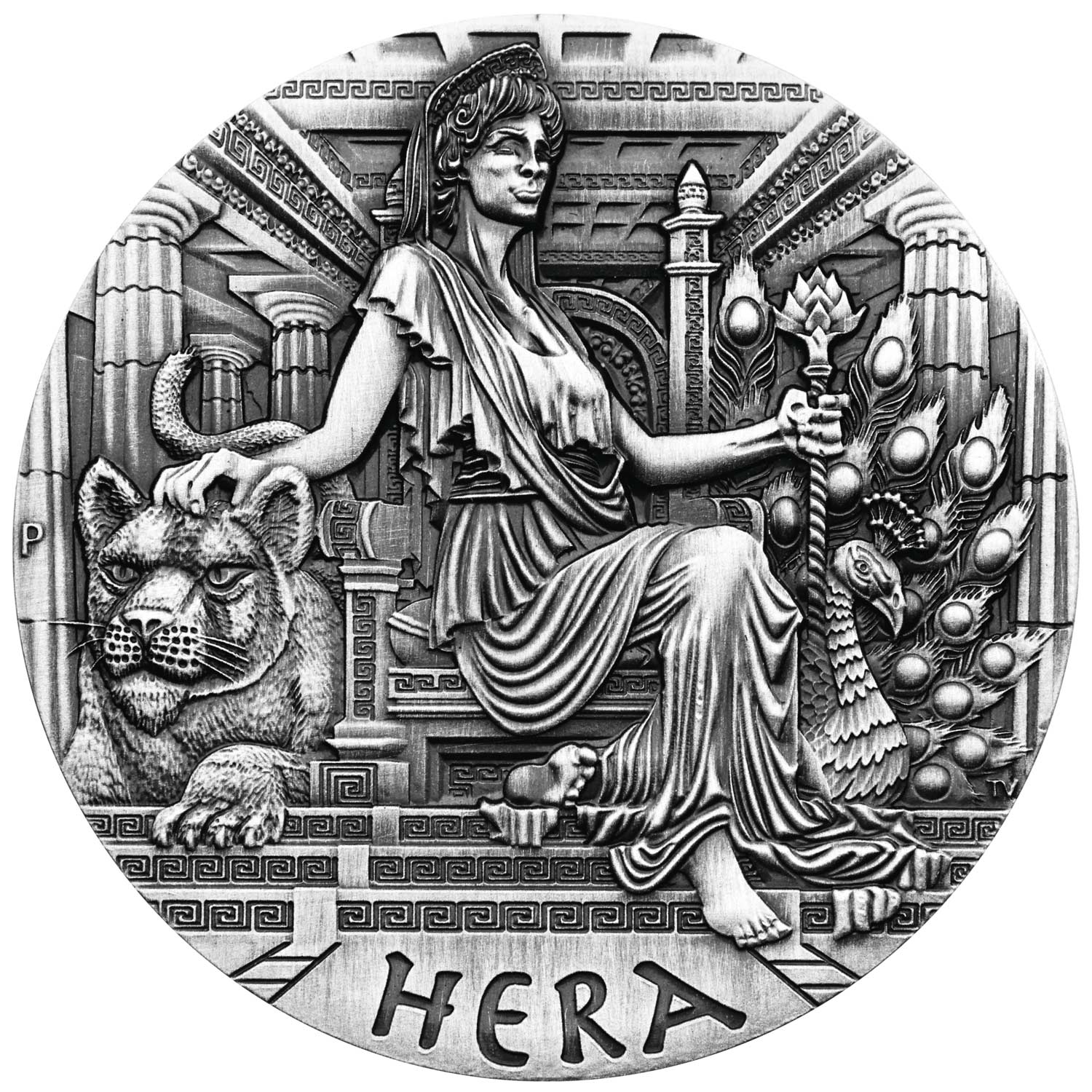
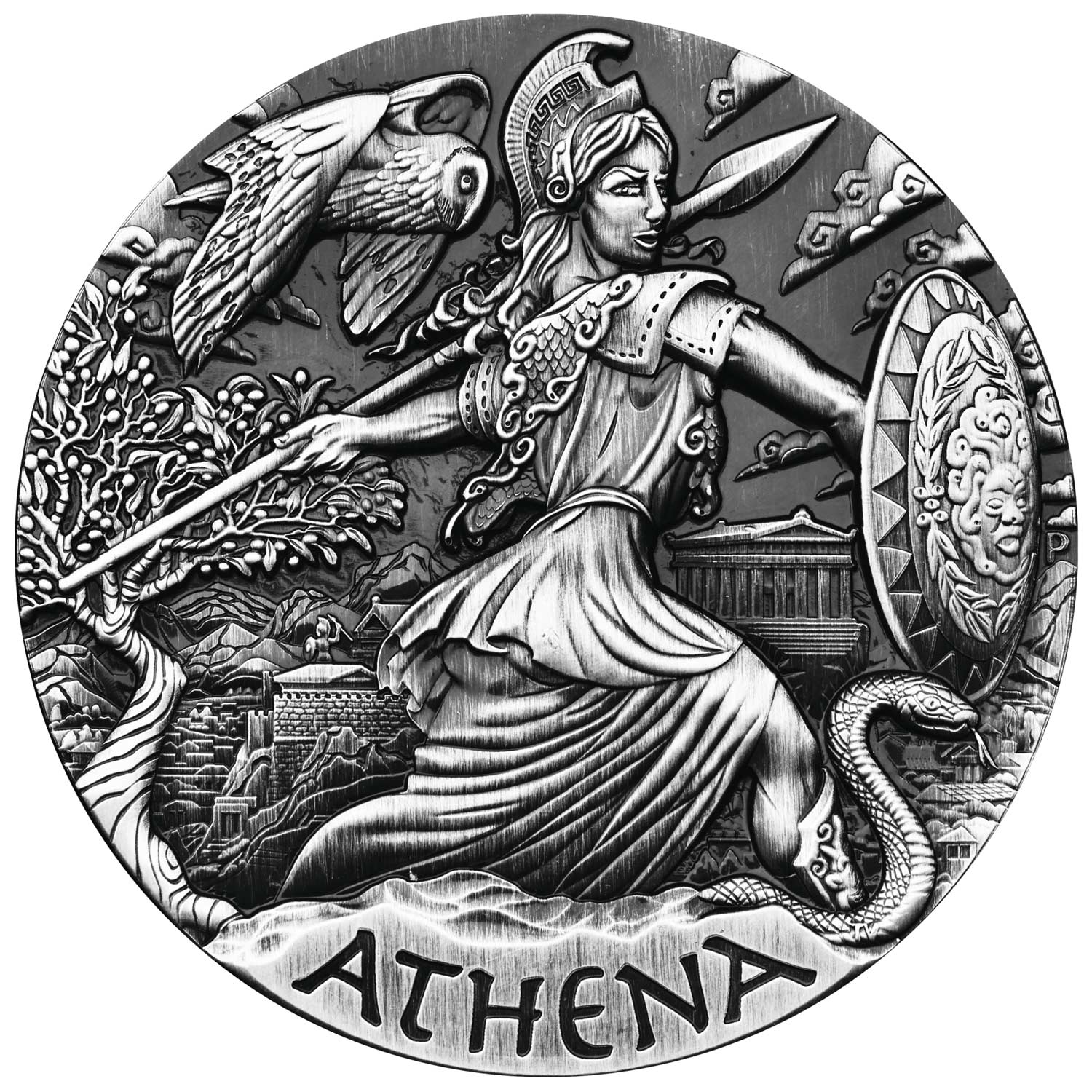

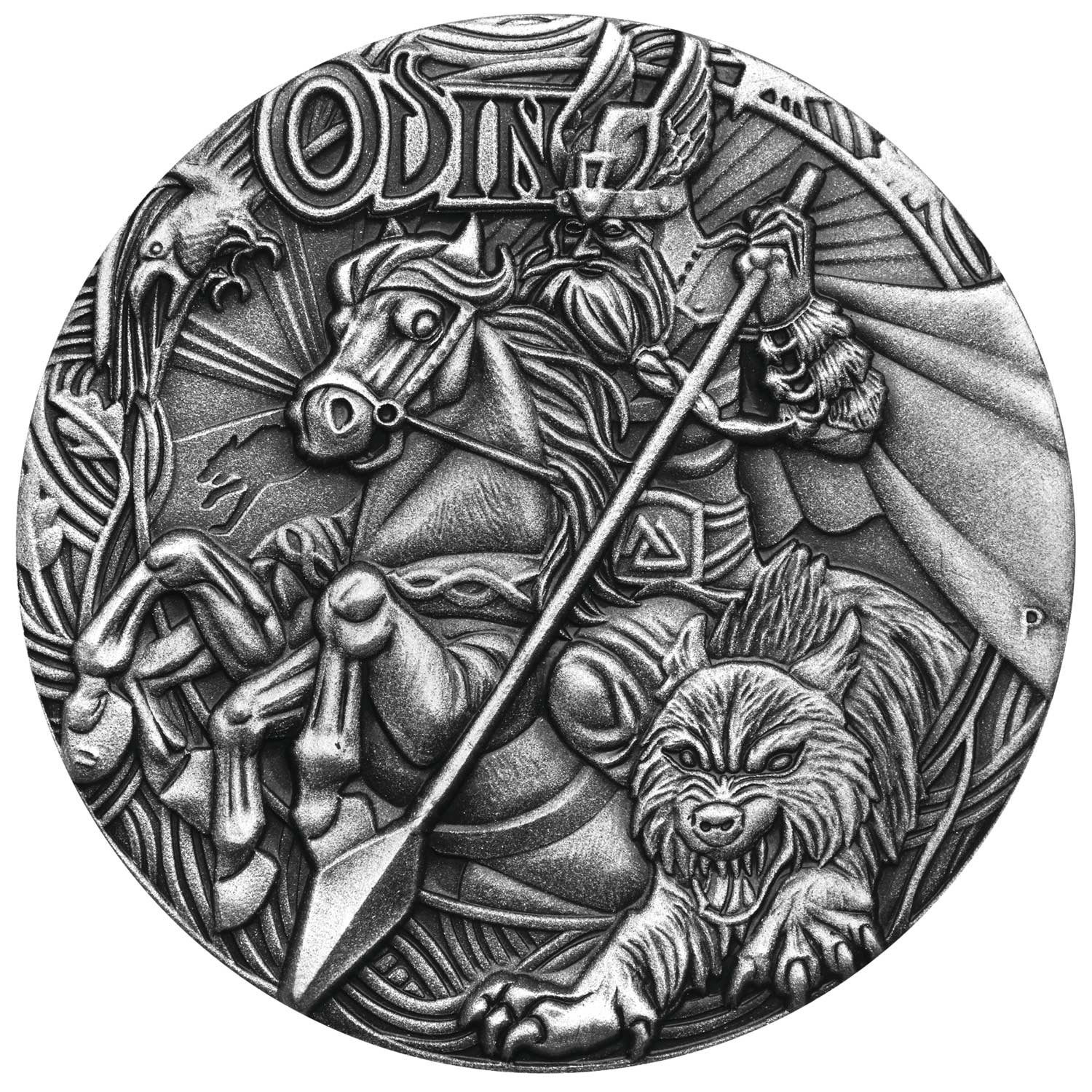
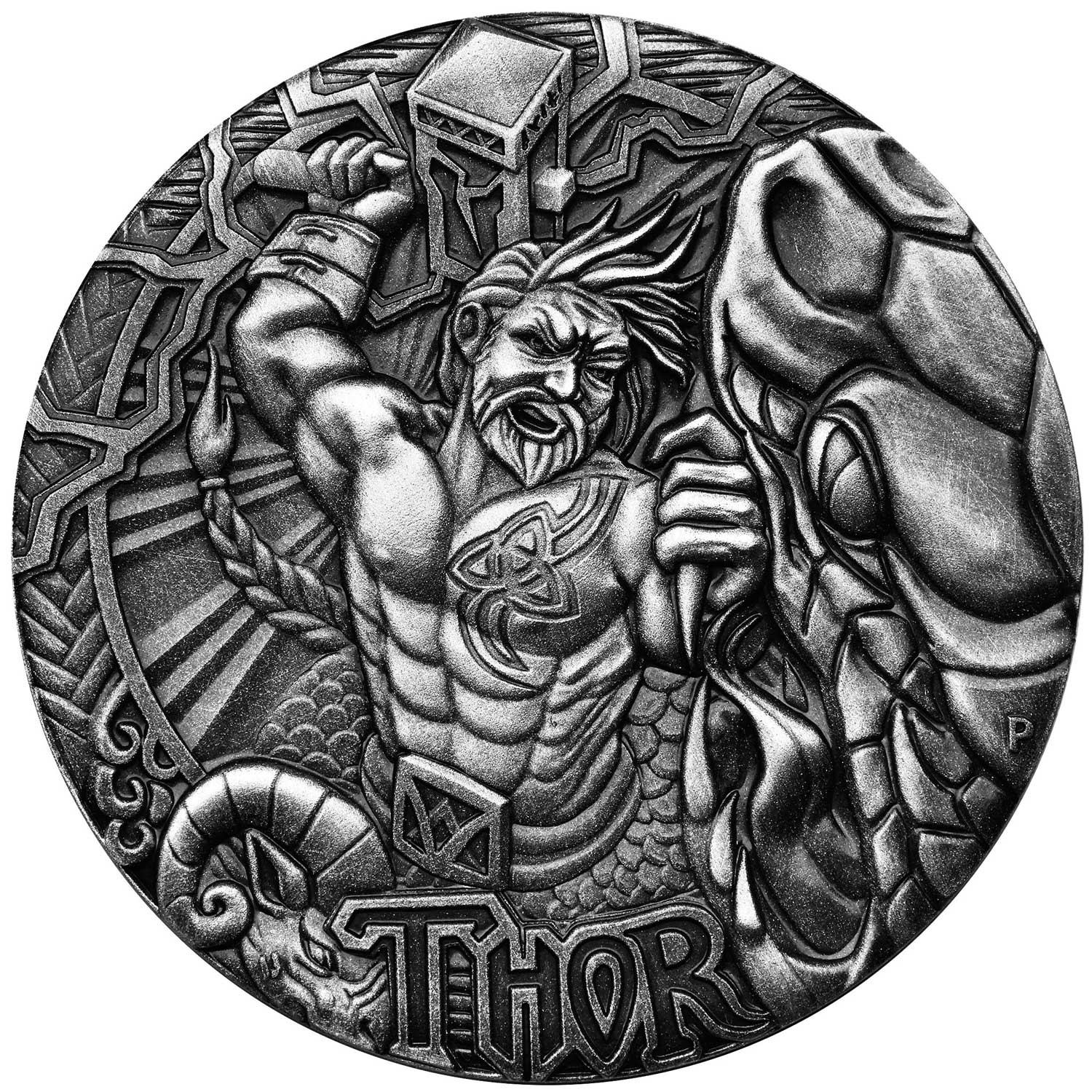
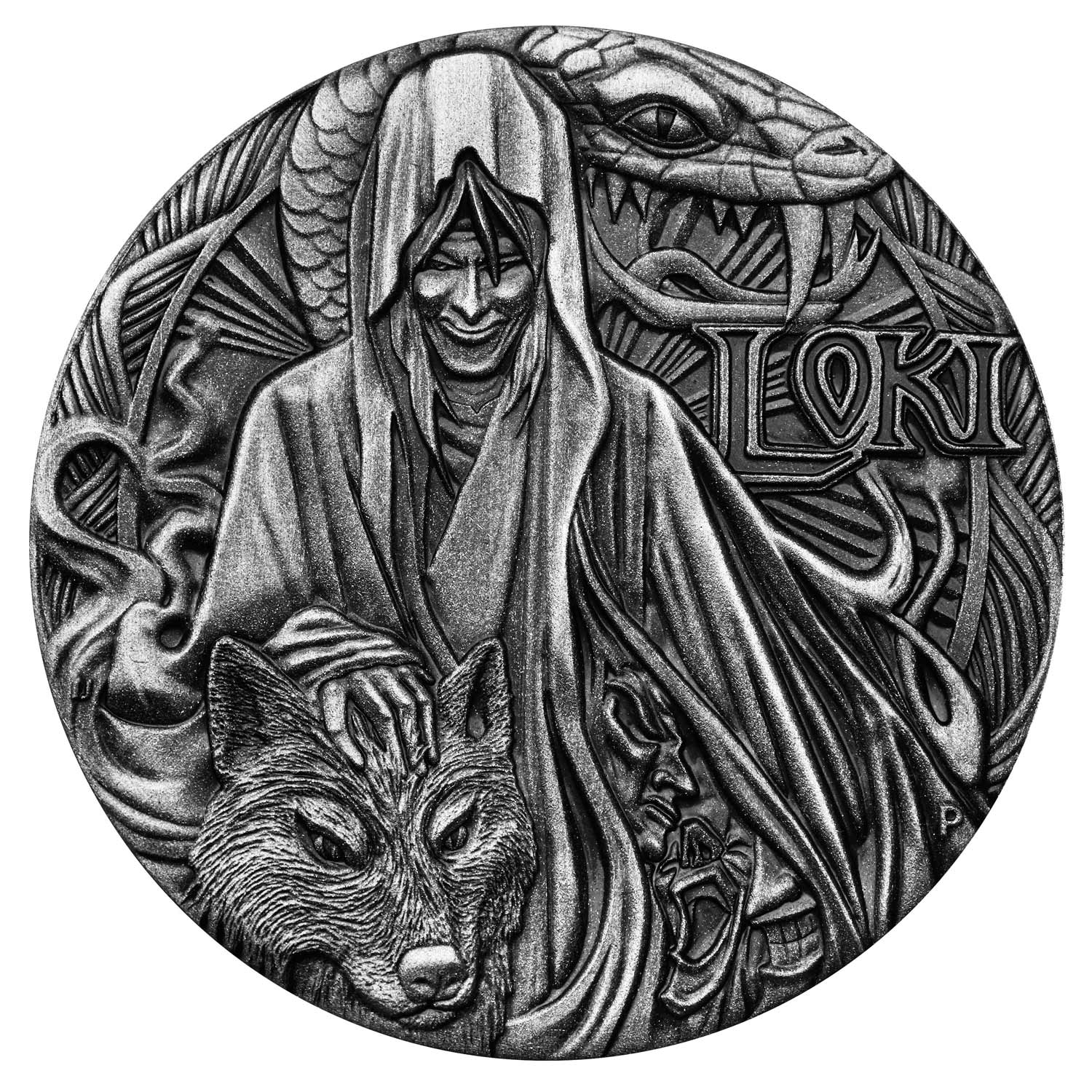
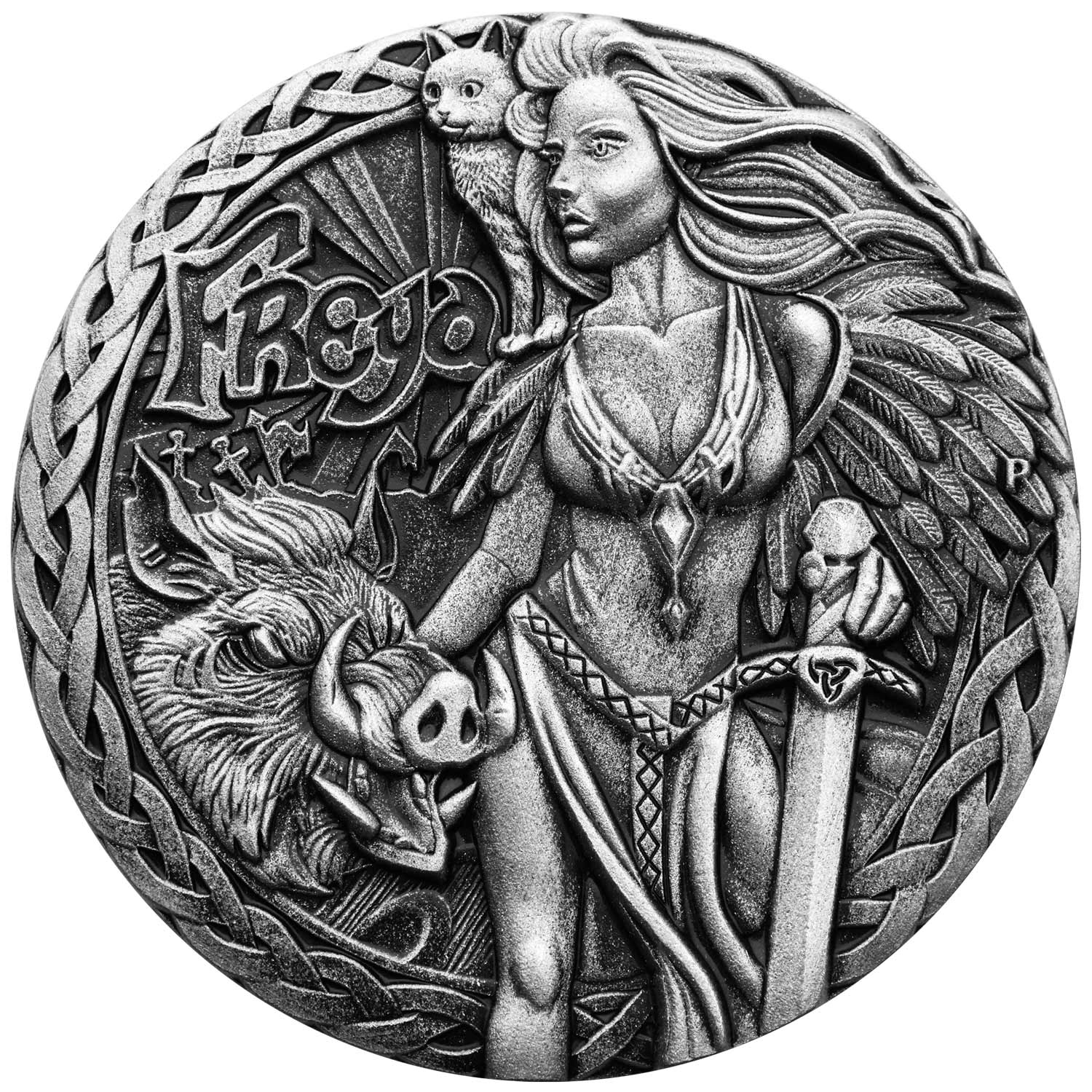
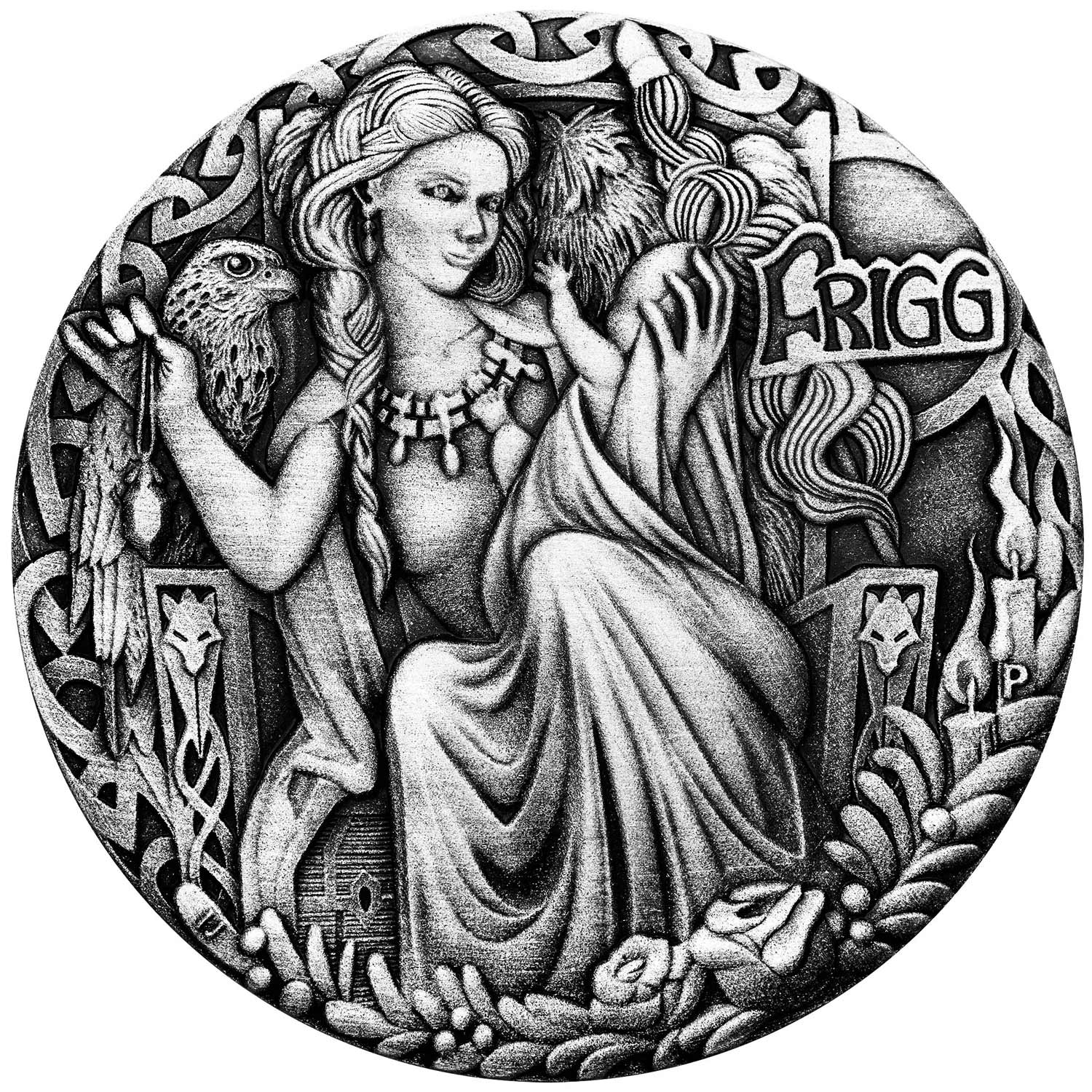
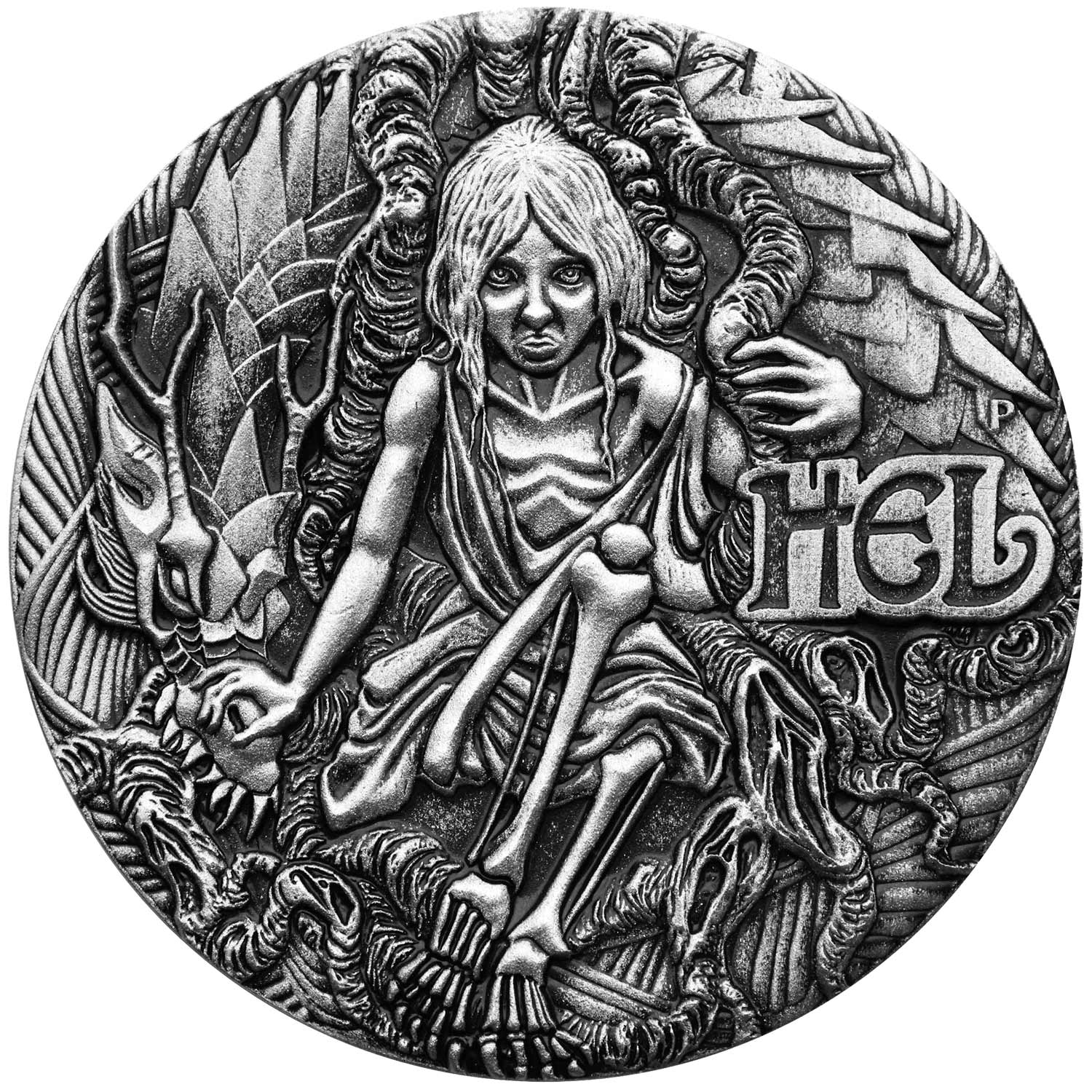




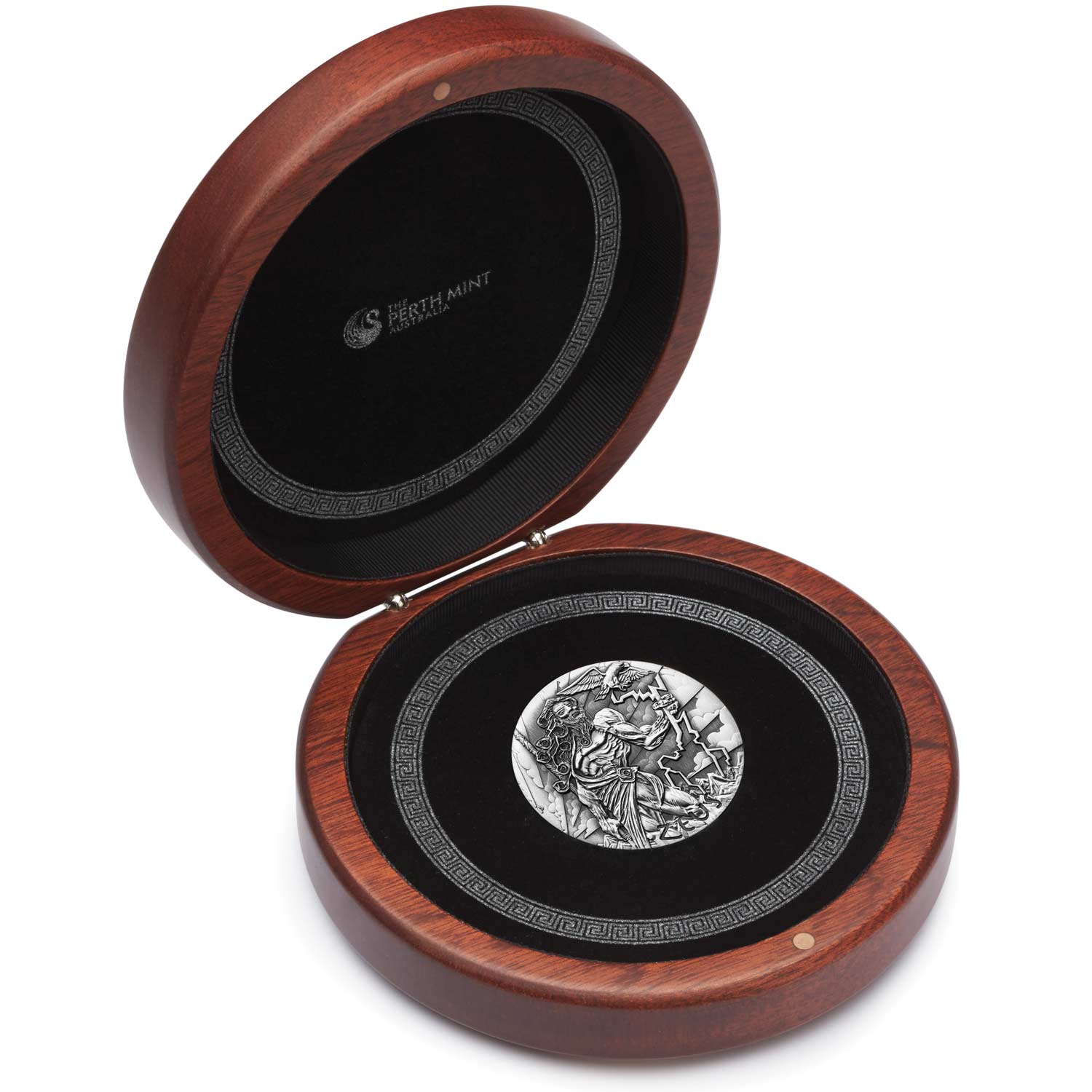
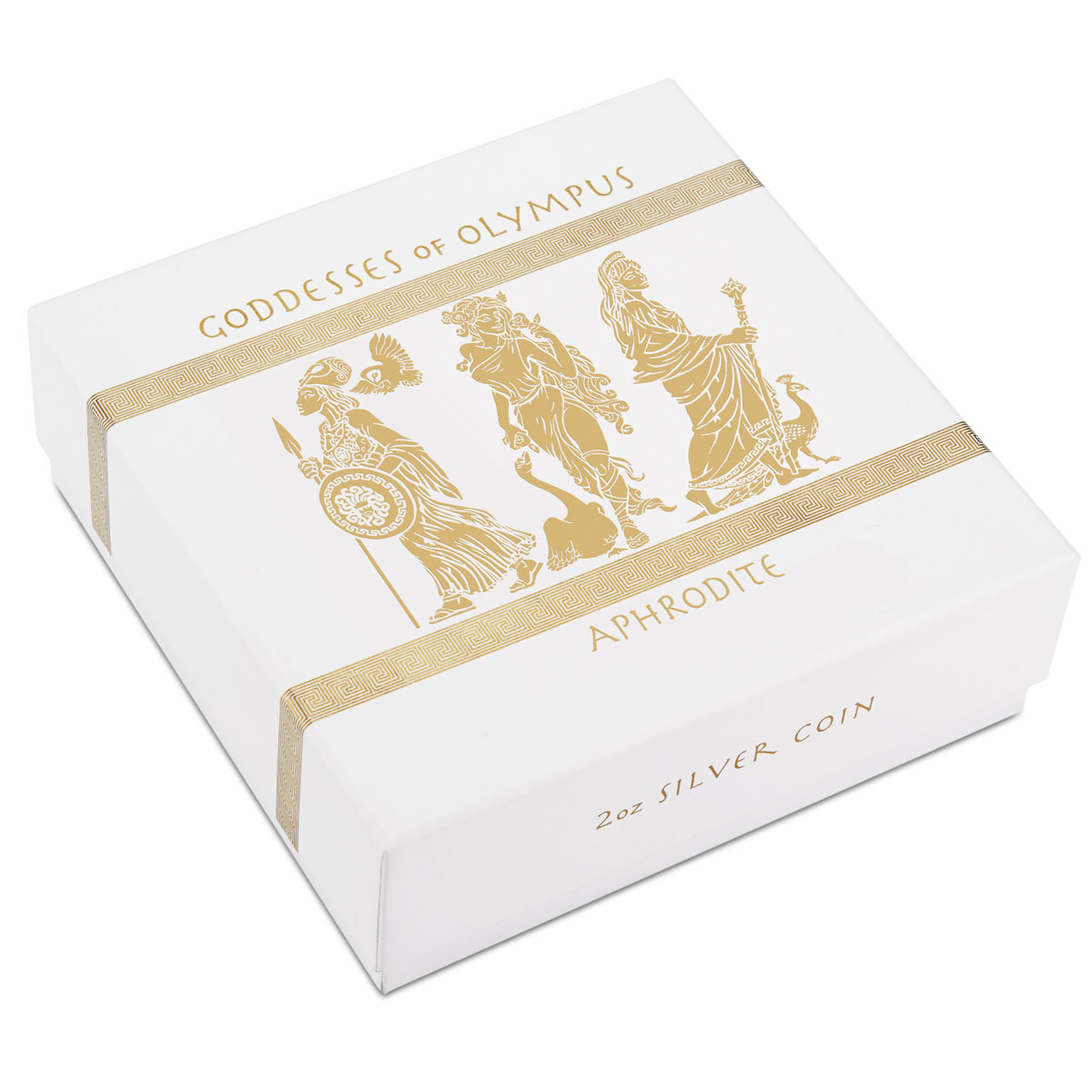


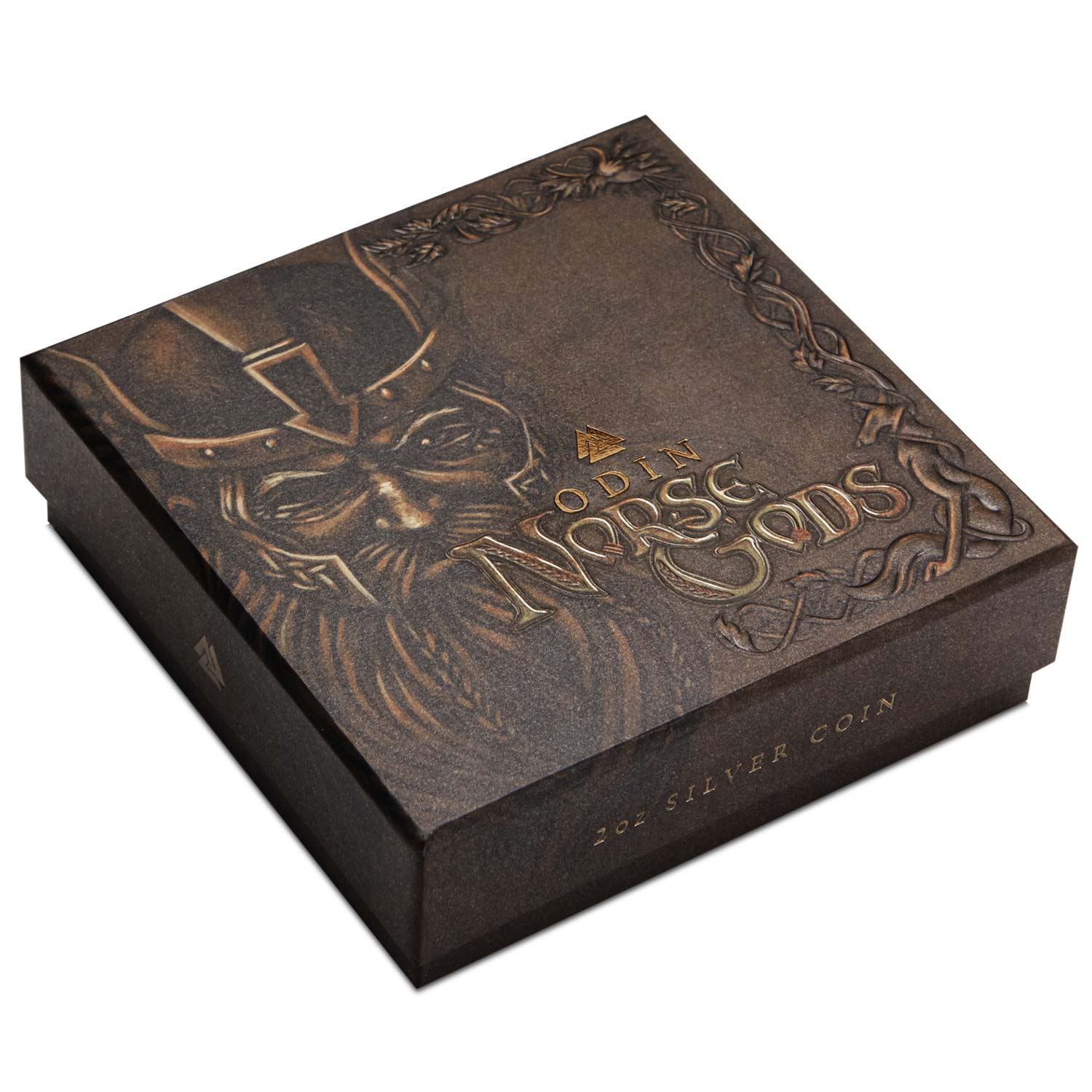

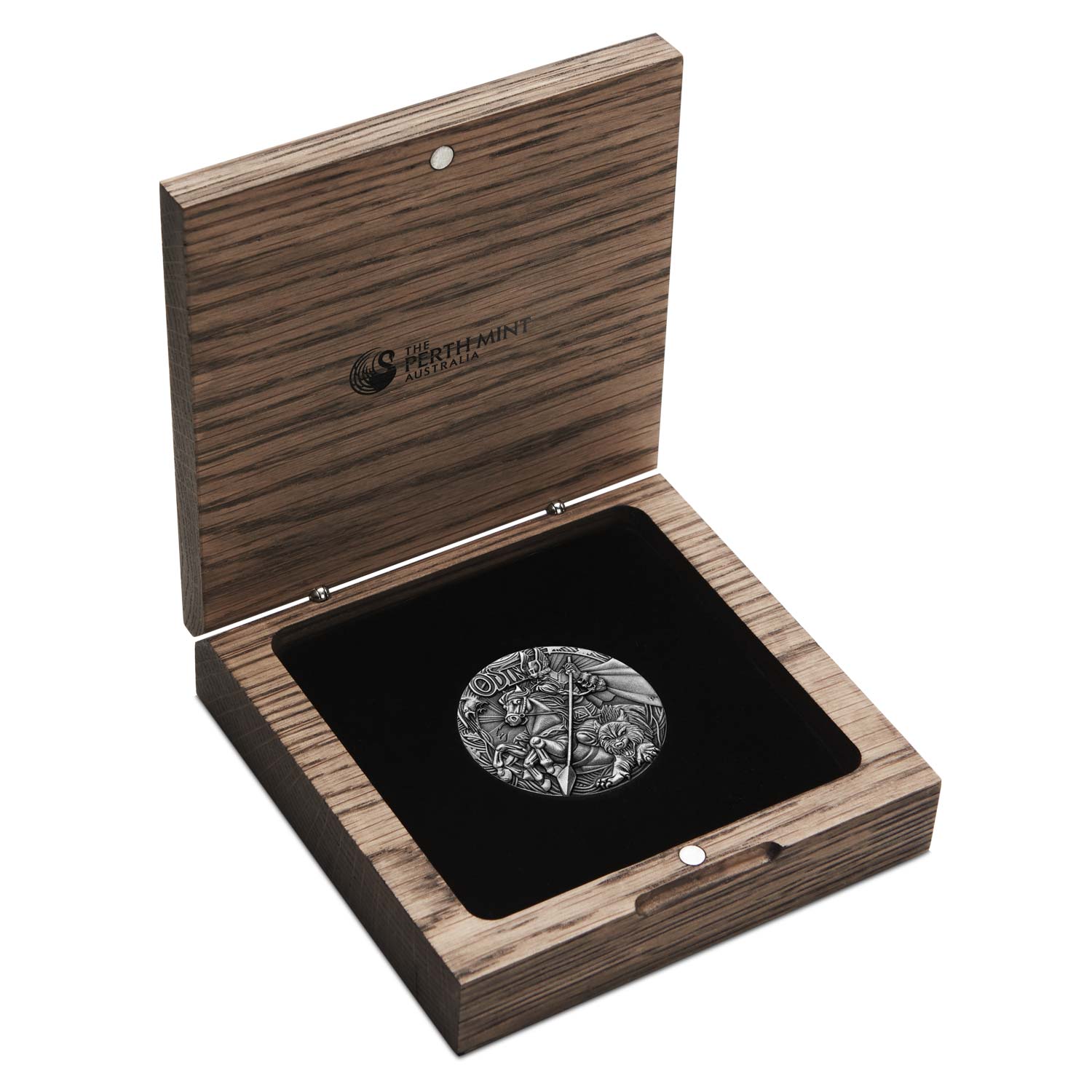
Leave A Comment